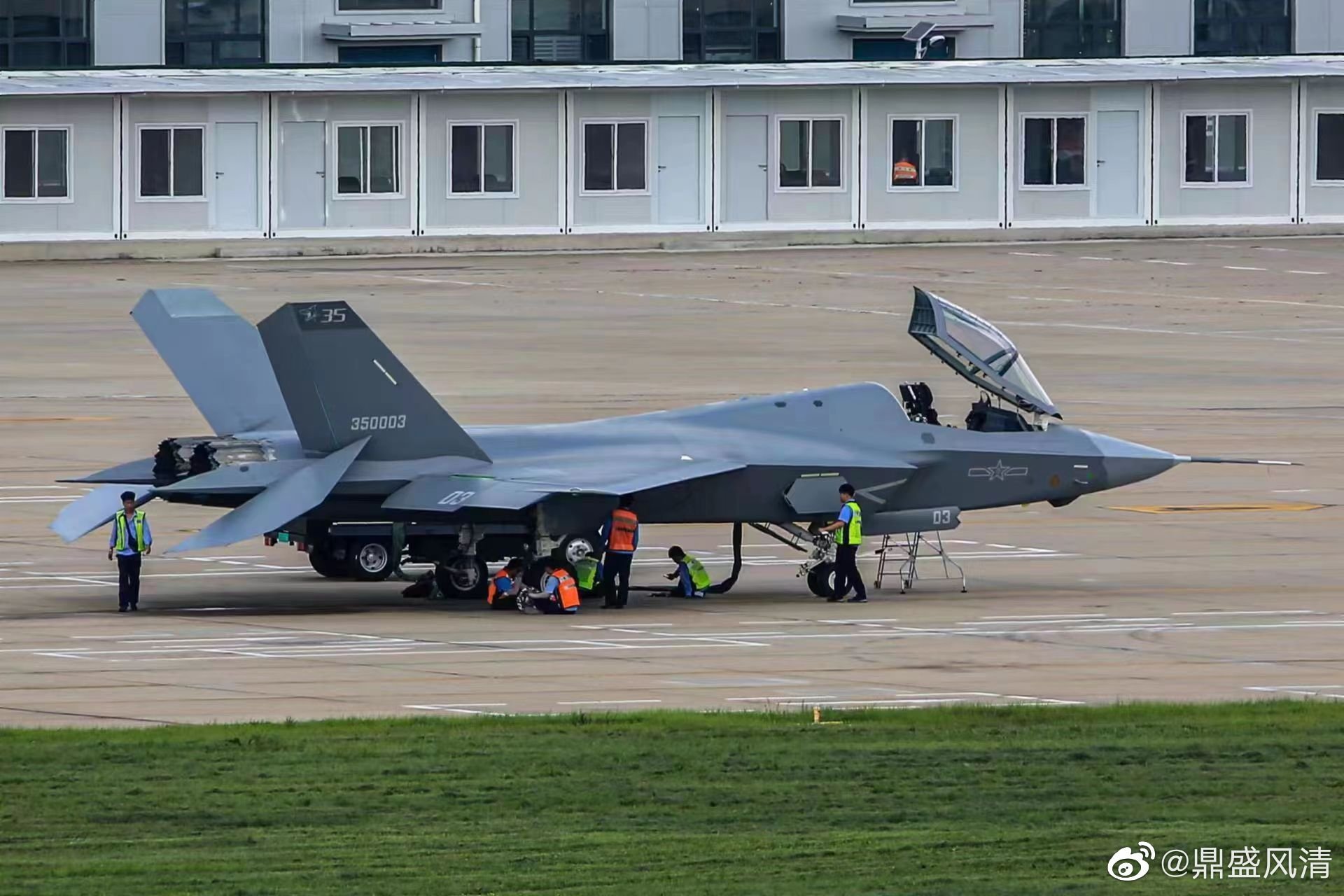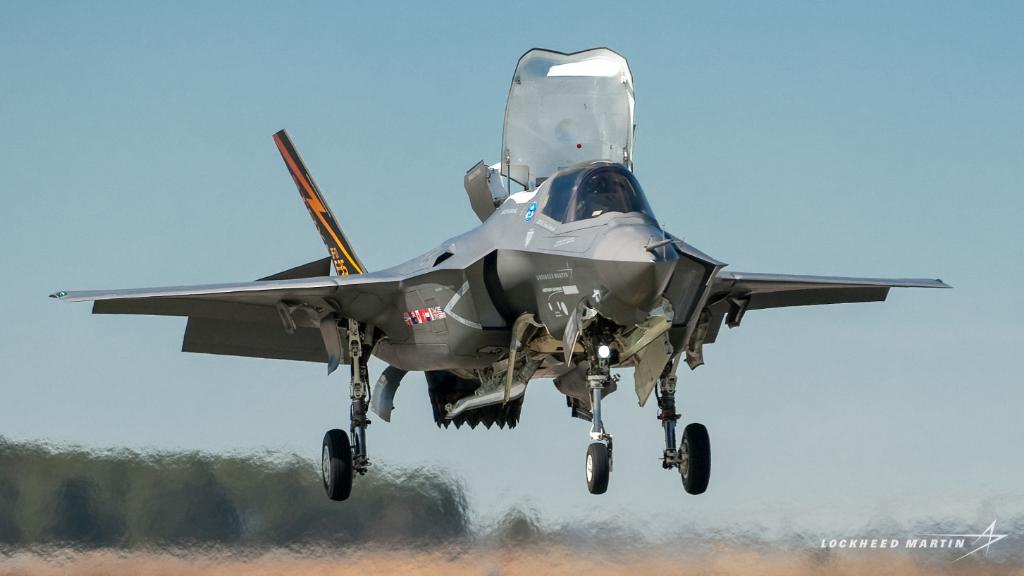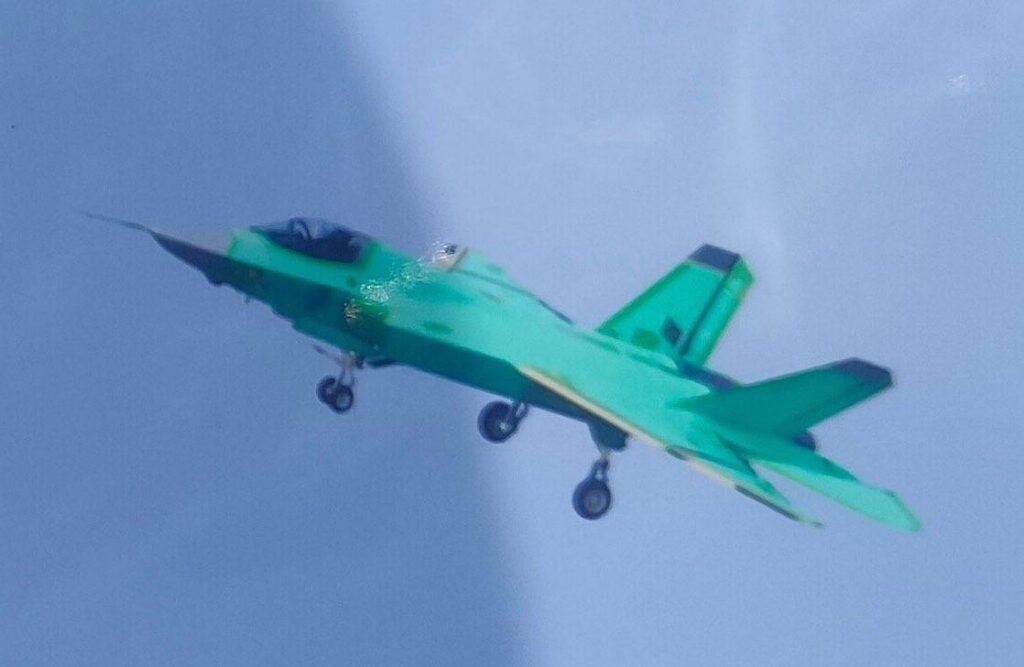The first high-resolution images of China’s fifth-generation J-35 stealth aircraft took social media by storm not so recently, with aviation enthusiasts comparing it with the US F-35 aircraft.
Much of the discussion focussed on the visual similarities between the two stealth fighters, but looks are not everything!
The image shows the J-35 stealth fighter, also known as the FC-31, with the serial number 35003 and a gray tactical paint job. A recent Eurasian Times report shows this is reportedly the second flying prototype.

The images suggest that the J-35 has a front-opening canopy, just like the F-35s. There is a similarity in the J-35’s canopy configuration and that of the F-35B variant that features the short take-off and vertical landing (STOVL) capability for use on the universal amphibious ships of the US Marine Corps and the US Navy.
Similar Cockpit Configuration
In both the J-35 and F-35B, the upper part of the fuselage is merged with the rear part of the canopy, which in the case of the F-35B is due to the need for a lifting fan behind the cockpit to enable vertical take-off and landing.
Unlike the F-35B, the FC-31 is not known to be STOVL aircraft. Reports suggest it will be used onboard China’s Fujian aircraft carrier with electromagnetic catapults to launch the aircraft. The Chinese press touts the FC-31 as a competitor to the US Navy’s carrier-capable F-35C.

Also, in previous images of the FC-31, a launch bar can be seen on its front landing gear, typically used for catapult launches.
The same logic does not necessarily apply in the case of the J-35’s canopy configuration, as also pointed out by the defense journalist Joseph Chacko, who suggests the Chinese could have possibly decided to utilize most of the interior space so that plane could carry as much fuel as possible.

According to Chacko, fuel storage capacity is critical for two reasons: the large combat radius of the traditionally huge sea areas and a “fifth-generation fighter should not carry outboard fuel tanks if it wants to maintain its stealth.”
Engines Used In F-35 And J-35
All F-35 variants are powered by a single Pratt & Whitney F135 engine, producing a maximum thrust of 191.3kN.
Whereas the FC-31 is a twin-engine aircraft known to use two types of engines, the Russian-made RD-93, which is used in MiG-29 fighters, and the Chinese-made WS series engines, which are similar to the RD-93 in terms of both appearance and functionality.
The first FC-31 prototype had the RD-93 engine, which can produce a maximum thrust of 84kN, meaning two of these can produce 168kN afterburner thrust, much lesser than the F-35.
The engine also received negative reviews after the FC-31’s first public flight demonstration in the 2014 edition of China’s biennial Zhuhai Air Show.

Much of the criticism was centered around the dark exhaust fumes that came out from the FC-31’s jet engine, suggesting poor engine efficiency in burning fuel.
The RD-93 was then replaced with WS-13E in the second prototype, which has more thrust, burns clean, and is probably more fuel-efficient. The WS-13E is said to develop a maximum thrust of roughly 107.8 kN, meaning a pair of these engines could produce a combined afterburner thrust of 215.6 kN.
Furthermore, the latest FC-31 prototype has the WS-13X engine, but nothing is known about its performance.
The F-35C has a maximum speed of 1,960km/h, a combat radius of 1,100 kilometers, and a maximum range of 2,200 kilometers.
Powered by a pair of WS-13E engines, the FC-31 has a maximum speed of 2,205 km/hr, exceeding that of FC-31, and an estimated maximum range of 2,000 kilometers.
In terms of weapons payload capacity, the F-35C can carry more than 2267.96 kilograms of internal weapons or more than 8164.66 kilograms of combined internal and external weapons.
The FC-31 has a reported weapons load capacity of 8000 kilograms, of which 2000 kilograms can be stored internally and 6000 kilograms can be carried on external hardpoints.
Advances In Stealth And Sensor Fusion Capabilities
Above everything else, the respective stealth capability of the F-35C and the FC-31 make all the difference.
As Eurasian Times has previously reported, the Chinese hackers had allegedly stolen many terabytes of data related to the F-35 program, the F-22 Raptor, and the B-2 stealth bomber, which is believed to have been used by China’s FC-31 stealth aircraft.
Eurasian Times asked the former F-35 Test Pilot Billie Flynn about the respective stealth capacities of the F-35C and FC-31.
Flynn began by saying, “Imitation is the sincerest form of flattery that mediocrity can pay to greatness.”
He further explained that the F-35 is “a product of three generations of stealth manufactured in the F-117, the F-22 Raptor, and the F-35 Lighting,” and “that level of sophistication in manufacturing technique cannot be copied in a couple of years.”

Therefore, according to Flynn, there is no appreciable comparison of a J-35 to the truly stealth capabilities of the F-35.
Flynn also noted that stealth is only one of the two significant characteristics of a fifth-generation fighter, the other being sensor fusion.
Sensor Fusion is an aircraft’s data integration and management capabilities that enhance a fighter pilot’s situational awareness.
“I believe that the Chinese J-35 will never match the advantages held by F-22 and F-35 in sensor fusion,” said Flynn.
Furthermore, Flynn pointed out that comparing two adversary aircraft is often done without factoring in fighter pilots’ capabilities in combat. “We should never underestimate the capability of highly trained Western fifth-generation fighter pilots,” said Flynn.
- Contact the author at tanmaykadam700@gmail.com
- Follow EurAsian Times on Google News




